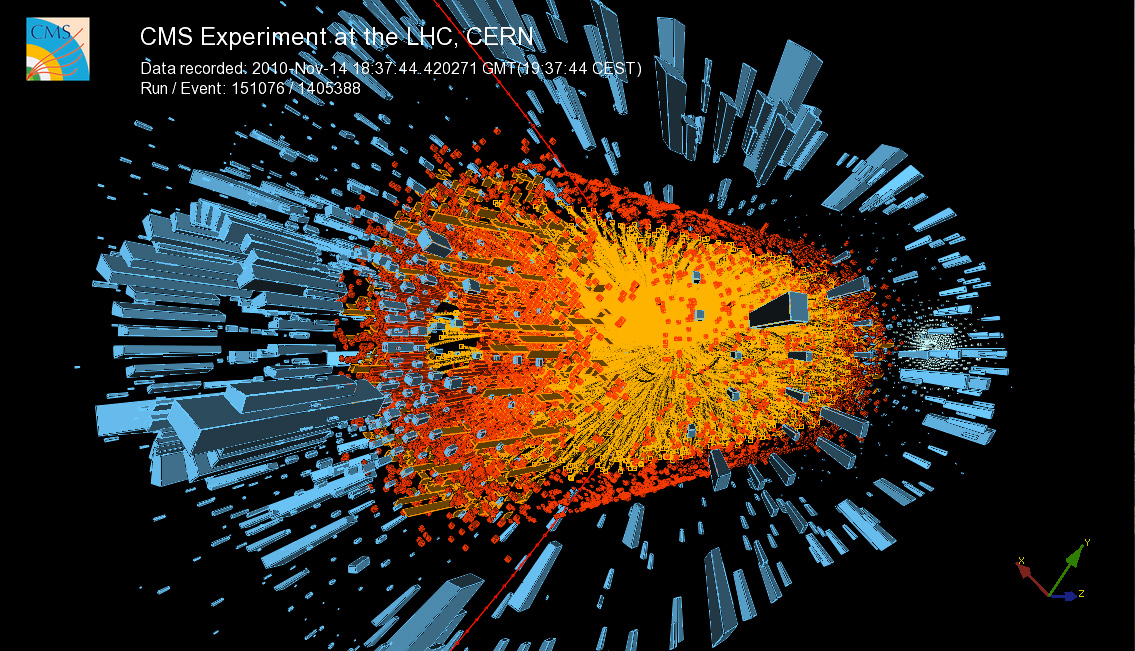
The CMS collaboration is presenting its latest results this week at the annual Quark Matter conference, held this year in Annecy, France. The results are based on analyses of data collected during the LHC's heavy-ion run in the last two weeks of 2010 and early proton runs in 2011, both of which were conducted at an energy of 2.76 TeV per nucleon pair.
A striking result from CMS concerns the propagation of particles known as Upsilons through the soup-like Quark-Gluon Plasma, thought to have existed during the first microseconds of the Universe. Upsilons are composite particles consisting of a b quark and its anti-quark, and they exist in three forms: a tightly-bound ground state and two loosely-bound excited states. CMS has observed that the lightly-bound states break up during their journey through the plasma, whereas the tightly-bound state is robust enough to survive its journey. Precision measurements such as this are the key to understanding matter as it would have been just after the Universe’s birth.
Other resources:
- CERN Press release: English | French
- Latest public CMS heavy-ion physics results
- Images: Event displays of heavy-ion collisions
- LHC heavy-ion physics
- Log in to post comments

